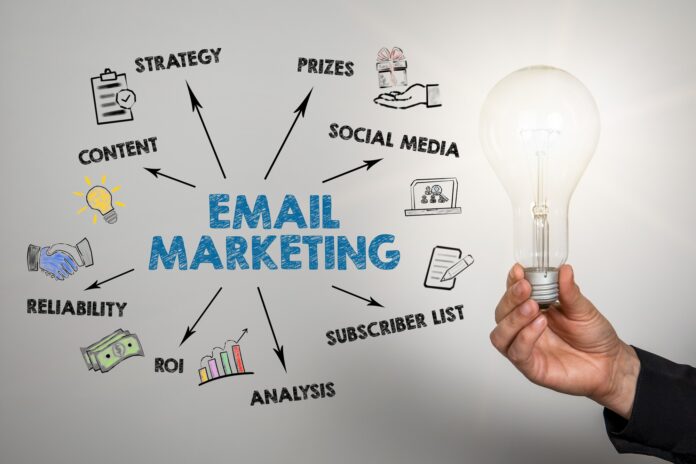In the ever-evolving digital landscape, the business battleground is constantly shifting. One domain that remains a persistent challenge for organizations of all sizes is marketing. In the age of information overload, capturing audience attention and driving meaningful engagements have become both an art and a science.
Here are some transformative strategies to elevate your marketing game to unprecedented heights.
Understanding Your Target Audience

One fundamental aspect of successful marketing lies in understanding your target audience. Without a deep comprehension of who your potential customers are, their preferences, needs, and behaviors, even the most creative and well-funded marketing efforts can fall flat.
Firstly, invest time in comprehensive market research. Identify your potential customers’ demographic data, psychographic attributes, and behavioral patterns. Such insights will help tailor your marketing messages to resonate effectively with your target market. Secondly, create detailed buyer personas — hypothetical models of your ideal customers to guide your marketing strategies. These personas provide a human face to your customer data, making it easier to empathize with their needs and expectations.
Incorporating Visual Content
In the vast arena of digital content, visual materials have emerged quite powerfully in the last few decades. Visual content, ranging from infographics to videos, helps to make complex information understandable, keeps your audience engaged, and boosts retention. One key component of visual content is images, with a special mention of royalty-free images.
Royalty-free images are a cost-effective and legal way to enhance your marketing materials. These images can be purchased or downloaded from various online platforms and can be used without worrying about copyright infringement. They not only add aesthetic appeal to your content but also amplify your message’s impact. While high-quality original visuals are preferable, royalty-free images are a great resource when original content is not feasible.
Mastering SEO

What is Search Engine Optimization (SEO)? Simply put, SEO is the practice of enhancing your website and content to improve its visibility on search engines. Higher visibility translates into increased organic traffic, subsequently leading to a higher probability of conversion.
Implementing an effective SEO strategy requires patience and diligence. Begin by performing keyword research to identify terms and phrases that your target audience uses when searching for products or services similar to yours. Ensure that these keywords are naturally incorporated within your content and meta tags. Furthermore, strive to provide high-quality, relevant, and updated content to boost your website’s domain authority, a critical factor in search engine rankings.
Leveraging Social Media Platforms
Social media platforms are an excellent means of connecting with your audience and promoting your brand. With billions of users across various platforms, social media gives you unprecedented reach and influence.
The key to leveraging social media lies in understanding each platform’s unique dynamics and user demographics. For instance, Instagram, with its visually-centric nature, is perfect for promoting lifestyle products, while LinkedIn is ideal for B2B marketing. Once you’ve selected your platforms, engage your audience with a mix of promotional, informative, and entertaining content. Remember to monitor your analytics to understand which posts drive the most engagement and adjust your strategy accordingly.
Implementing Content Marketing Strategies

Content marketing is a long-term strategy that involves creating and sharing valuable content to attract and retain customers. It goes beyond advertising your products or services and provides your audience with relevant information that solves their problems.
One way to implement this strategy is by maintaining a company blog with regular posts related to your industry. This not only positions you as an authority in your field but also provides a platform to insert keywords, improving SEO. Also, consider other forms of content like e-books, white papers, podcasts, or videos. Remember that consistency and quality are paramount in content marketing.
Utilizing Data Analytics
In this age of information, data is king. Effective data analytics can provide insights into your customers’ preferences and behaviors, allowing you to tailor your marketing strategies accordingly.
Data analytics involves collecting, processing, and interpreting data. Tools like Google Analytics and Adobe Analytics can provide useful insights about your website’s performance and user interaction. Besides website analytics, customer feedback surveys and social media analytics are other rich sources of useful data. With such data in hand, you can make evidence-based decisions that improve the effectiveness of your marketing campaigns.
Embracing Email Marketing

Despite the explosion of social media and other digital communication platforms, email remains a powerful and relevant marketing tool. Well-executed email marketing campaigns offer a way to reach your customers directly and personally, fostering stronger relationships.
Begin by building a robust email list. This can be achieved by offering valuable content or incentives in exchange for customers’ email addresses. Once you have an engaged list, segment it based on your customers’ behaviors, preferences, or demographic details to ensure targeted communication. Remember to craft captivating subject lines, include strong calls to action, and maintain a consistent yet respectful communication frequency.
Personalizing Your Marketing Approach
Personalization is no longer a luxury; it’s a necessity in today’s marketing landscape. Customers desire and expect personalized experiences that cater to their unique needs and preferences.
Marketing personalization can be as simple as addressing the customer by their first name in emails or as sophisticated as using AI-driven tools to deliver personalized product recommendations based on their browsing behavior. Personalized experiences not only increase customer satisfaction but also enhance brand loyalty and improve conversion rates.
Investing in Influencer Marketing
Influencer marketing is a rapidly growing field that involves partnering with influential individuals to promote your brand. These individuals have a loyal following who value their opinions, making them powerful allies in spreading your brand’s message.
Choosing the right influencer is crucial. They should align with your brand’s values and appeal to your target demographic. Whether a celebrity or a micro-influencer, the key is authenticity and mutual respect. With a well-planned influencer marketing strategy, you can expand your reach and build trust among potential customers.
Exploring Emerging Marketing Technologies

Innovation is the lifeblood of marketing. Embracing new technologies can provide a significant competitive advantage, enabling you to connect with customers in novel and engaging ways.
Stay attuned to emerging technologies such as artificial intelligence (AI), virtual reality (VR), augmented reality (AR), and chatbots. AI, for instance, can provide personalized experiences at scale, while VR/AR can offer immersive experiences that engage customers deeply. Meanwhile, chatbots can provide instant customer service, improving satisfaction and retention.
Conclusion
Marketing today is a dynamic landscape where standing still is moving backward. Implementing these ten strategies can help you stay ahead of the curve, attract more customers, and enhance your brand’s reputation. Remember, marketing is not a one-size-fits-all endeavor. It requires continual learning, testing, and adapting.





